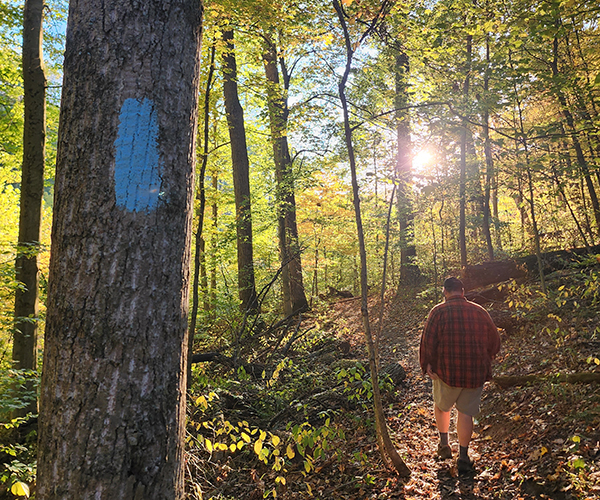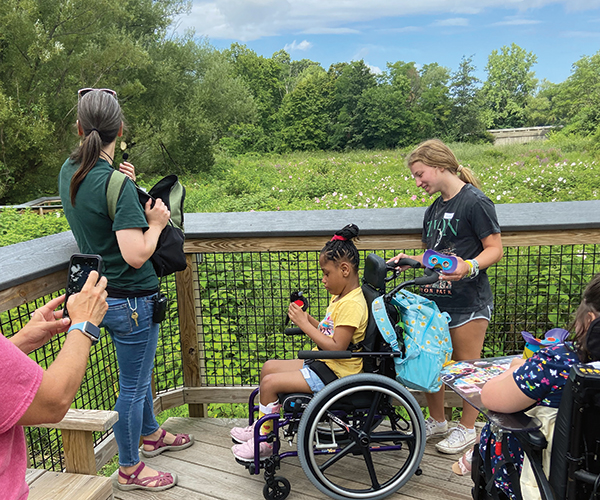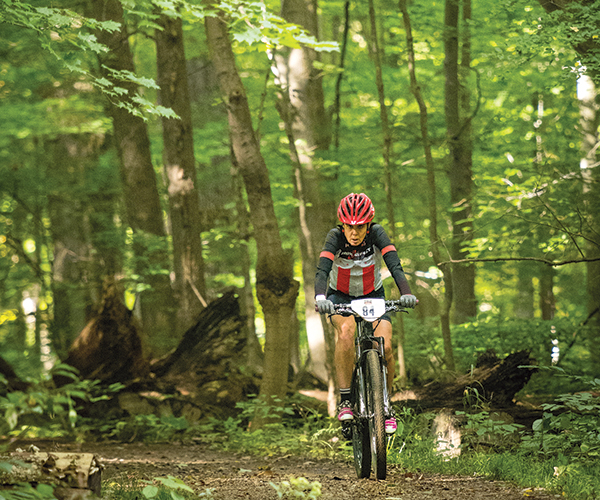Want to experience Cleveland's lakefront? Don't expect a day at the beach. In 1946, the Memorial Shoreway barricaded the city from Lake Erie, turning much of the water's edge into off-limits land behind chain-link fences topped with barbed wire. And so it has remained for 57 years.
Now, the people and the politicians agree that Cleveland needs to reunite its population with its greatest natural asset. To do so, city leaders are contemplating one of the most ambitious, complex and costly plans in Cleveland's history.
The goal is to transform the 8-mile Shoreway into a 35-mph boulevard with a parallel recreation path that will run from Edgewater Park to Gordon Park. On the eastern half of the boulevard, that involves moving parts of I-90 south, streamlining treacherous Dead Man's Curve.
The city hopes to create more parkland, carve out five new neighborhoods by luring developers and add such possible attractions as a golf course, museums, park benches, stores and marinas.
As fabulous as all that sounds, we have questions: What exactly does the project involve? Where will the money come from? Will any of this be completed during our lifetime?
We turned to city planning director Chris Ronayne who, fresh from an inspiring visit to Chicago's historic waterfront, joined us for some straight talk about a very complicated proposal.
Cleveland Magazine: How much will the project cost?
Chris Ronayne: The western portion, which will be done first, should cost about $56 million. That figure includes turning the Shoreway into a boulevard, adding a path and adding intersections. We don't know yet how much the eastern portion, which involves moving I-90, will cost.
CM: Where will the money come from?
CR: We have applied for $28 million for the first phase and will apply for $47 million more in transportation funds through T3, the federal Transportation Efficiency Act. We should know in six to nine months if we'll get the $28 million.
As for the eastern portion of the project, up to $1 billion from the gasoline tax may be allocated for the Innerbelt project. Twenty-five percent of that project is in the same area as the lakefront plan. We'd love to think that some of that money could be used synergistically with the lakefront plan, but I can't say definitely today that it will happen.
CM: Where would money for the actual lakefront amenities come from?
CR: We will be culling the landscape for sources of funds for those kinds of things, ranging from coastal management money from the Department of Natural Resources to federal programs for waterfront opportunities and land reclamation. We did apply for money through the state capital-allocation program and received $1.1 million for amenities. But that's a very small part of what we will need.
CM: Is the city planning to fund the project through a measure such as an increased sales tax?
CR: Not at this point. In this economy, given limited resources, the community has to make choices. The kinds of amenities we think the community is enthusiastic toward are going to cost all of us something. There are choices to be made, whether it's neighborhood housing, convention centers, downtown housing, waterfronts, or parks and open space.
CM: If you can't find the right funding, will the lakefront plan die?
CR: No. This community has a taste for this. Their appetite is whetted and they'll be hungry for more. With a framework plan, you set a five- to 50-year vision and build incrementally on it.
CM: What suggestions has the community provided?
CR: They said, "We've got a great lake there and we don't use it." In one of the meetings I had in the Stockyard neighborhood, a woman said, "Show me how to get to the lakefront, but give me a reason to go there." We'd like to reconnect the women in St. Clair that remember walking down to the water's edge by creating a seamless Gordon Park, even potentially looking at building a bridge over the highway so there's a green corridor to the lakefront. People want access.
CM: What are your hopes for the lakefront's impact on downtown housing?
CR: Right now, we have about 485,000 people in the city of Cleveland. The mayor's charge is to repopulate the census count to over 500,000. One of the initiatives is to add more than 1,500 homes per year in the city of Cleveland. If half of them fall in this Waterfront District from Edgewater to Gordon and downtown, in 20 years, you'd have 15,000 new homes.
CM: The land at issue — how much is private? How much is public?
CR: Two-thirds of the eight miles we're talking about is public, but used by public utilities. It belongs to the Port of Cleveland and Burke Lakefront Airport. It's public, but publicly inaccessible.
The mayor has charged us to look at these areas and create new points of access. Is there an opportunity to take part of Burke and use it as a public passive-recreation space, to create public boardwalks along the lake or public vista points? We're still wrestling with that question.
CM: Now, we drive into the city, past the lake, at 50 mph. Would the entire new lakefront be a 35-mph boulevard?
CR: Yes. Except for I-90, which would remain at interstate posted speeds. On the east side, we're talking about moving a 2-mile stretch of I-90 south a few hundred yards to where the South Marginal is now. The boulevard would run parallel on the current North Marginal right of way.
CM: How does renovating the lakefront benefit Cleveland?
CR: If we are going to be a competitive city, we need to create competitive places. Companies generally will relocate to a place where they feel they can retain and attract a skilled work force. And waterfronts contribute to that. Where would San Francisco be without the San Francisco Bay? Where would Chicago be without the lakefront? Cleveland can be a competitive waterfront town. This all relates to the brain drain. We don't want a city where we lose graduates to Chicago and Columbus and New York and San Fran. We want them to stay here because they love Cleveland and because there are things to do.
CM: What is the biggest obstacle the project faces?
CR: Without doubt, the No. 1 question hanging in the balance is, "How will we fund this?"
CM: So much of this project is in the planning stages. What is the likelihood of it becoming a reality?
CR: It's not a matter of if, it's a matter of when. When is very realistically rooted in the reality of available funds.
CM: What progress can we expect to see if we leave and return in two years?
CR: Thirty-five acres of land for public use, including Dock 32 at North Coast Harbor, parts of Whiskey Island and beginning work on Dike 14 at Gordon Park. You'll see continued residential and commercial development south of the boulevard, the promotion of this as a potential waterfront district.
CM: In five years?
CR: The west boulevard should be in place. The east boulevard planning work will be further along. A comprehensive waterfront. The beginning of major renovations to the parks that form the bookends of this plan. Intersections at the boulevard connecting neighborhoods to the lake.
CM: Ten years?
CR: I think you'll see focused community conversation on the major institutions like Burke and the port. Someday, the area around Browns Stadium will have a whole new use: housing, new wharf space, vibrant commercial areas, festival space. You'll see Edgewater and Gordon parks as fantastic urban parks that we'll be proud of. You'll see massive in-fill of urban housing.
CM: In 20 years?
CR: Hopefully, we'll see people riding their bikes along the boulevard on a multipurpose trail that stretches from Edgewater Park to Gordon Park, watching recreational activity, enjoying a full plate of amenities.



